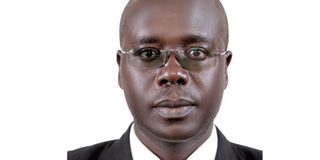Underlying issues in rising land grabbing in Karamoja

Oscar Okech Kanyangareng
What you need to know:
- A network of mafias. Although traditional institutions are the managers of customary land, the land grabbers, which is a network of mafias, by-pass them and use mainly formal institutions of local councils, sub-county area land committees, district land boards and magistrates courts.
The Minister for Karamoja Affairs, John Byabagambi, vowed last week to arrest land grabbers in Karamoja (See: ‘Minister to arrest land grabbers in Karamoja’ in the Daily Monitor of November 1. This is a welcome move. However, we need to delve into the root cause of the problem to find lasting solutions.
First, we should note that government has gazzetted 40.8 per cent of land in Karamoja for wildlife protection, 12.5 per cent for forestry conservation and has given mining concessions on 24.8 per cent of the land as of 2010, according to a 2013 report by Associates Research Trust-Uganda. Other lands are now covered by towns, trading centres, schools and health centres. Although the above land uses overlap, what then is left for the Karimojong?
The Karimojong are now being harassed by police and soldiers in the protected areas. Crops have been destroyed, livestock impounded and boreholes removed as was done in Napak District in 2013. A road which Mercy Corps wanted to construct in 2015 from Panyangara in Kotido District to Nyakwae in Abim District was blocked by UWA because it would pass through a game reserve.
The Karimojong used to graze livestock freely in these protected areas when they had guns. With guns gone after disarmament, the people are now very vulnerable. This brings a risk of re-armament and increased conflicts. Efforts to address land conflicts between wildlife and human beings in the protected areas have failed and should be re-visited.
While people are demanding for degazzetment of some land in protected areas, a report by an inter-ministerial and inter-agency committee in 2014, opposed this. They argued that since population density in Karamoja is low, if protected land is degazzetted, then other areas with a higher population density such as Kasese, Mt Elgon, Masindi, etc, will also demand for degazzetement.
So, the report that was presented to President Museveni recommends a ‘containment’ strategy.
That is, no investment in permanent structures should be done and people should be educated over time to move out of the protected areas. Interestingly, the inter-ministerial and inter-agency committee was chaired by the director of NUSAF, Dr Robert Limlim, who is a Karimojong. The committee also had three Karamoja MPs - Lokii Abrahams, Remigio Achia and Stella Namoi. So, whose interest where they representing?
Beyond the above, government institutions are also grabbing land. One such case is the 10-sq km of customary land at Kautakou in Napak District that was allegedly sold fraudulently to Uganda Investment Authority (UIA) by a Karimojong, who works with government. The case is now in court. Did UIA do due diligence before paying for the land?
The private companies have also joined the fray with 62% of the land under mining licenses by 2018, according to Karamoja Development Forum. Besides, these licenses are given in Entebbe without the involvement of the local people or local governments. Mining companies such as Tororo Cement are doing mineral exploitation whilst the local people are not adequately benefiting from surface land rights and royalties.
Since the Karimojong do not have land titles or certificates of customary land ownership, which have never been issued by government, so as to negotiate for benefits. Tororo Cement says they do not know whom to compensate, according to a 2014 report by Human Rights Watch. Besides, people work under poor conditions and are paid between a paltry Shs150,000 and Shs200,000 for a 10-ton truck load of marble or limestone. So, who takes the biggest share of profit in the supply chain when a 50kg bag of cement costs Shs32,000? With oil exploration having started in south Karamoja, land speculators are now eyeing there.
Although traditional institutions are the managers of customary land, the land grabbers, which is a network of mafias, by-pass them and use mainly formal institutions of local councils, sub county area land committees, district land boards and magistrates courts. These institutions are weak, corrupt and work in isolation from the traditional institutions that are ignorant. This malaise need to be addressed.
The traditional institutions are already weakened by the 1998 Land Act, which states that they are only supposed to be consulted by government institutions. Instead, the law should be amended to give them a legal mandate as the first point of reference on any customary land matters.
Besides, land in Karamoja is used communally. Since the Karimojong are mobile in search of water, pasture and salt licks, most people misunderstand that the land is free. But the owners are there with overlapping, flexible and negotiated primary, secondary and tertiary land rights that are best understood and handled by their traditional institutions.
In all the above issues raised, government has a role in them. So, where should Byabagambi start from? I also call upon the ongoing Bamugemereire led Commission of enquiry into land matters to pick interest on the unique land issues in Karamoja and address them.
Mr Kanyangareng is a development specialist and a civil society activist. He comes from Karamoja. [email protected]
Mr Kalinaki’s column returns next week.




